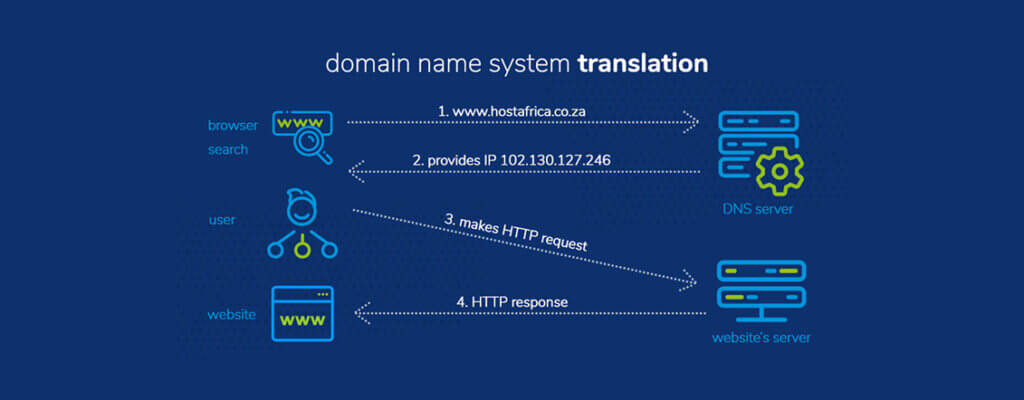Every website lives on a real machine that’s plugged into the internet 24/7. Web hosting is simply renting space and resources on that machine (a server) so your site is reachable at all times. Your files (HTML, CSS, images, scripts) and, often, a database sit on that server. When someone types your domain, the Domain Name System (DNS) translates it into an IP address and routes their browser to your server to fetch the page. That’s the whole dance—address, lookup, deliver. Old-school fundamentals that still run the modern web.

What’s changed is the bar for quality. In 2025, speed and responsiveness aren’t “nice to have.” They’re table stakes. Google now evaluates responsiveness with Interaction to Next Paint (INP)—a Core Web Vital that replaced FID in March 2024—so clunky input handling can hurt your visibility. Real-world performance expectations are tight: across various Hostvix studies, the average fully loaded time sits around ~2.5s on desktop and ~8.6s on mobile—and the sites winning on page one are typically faster.
Security is also non-negotiable. HTTPS is the default, and the certificate ecosystem is getting stricter and shorter-lived. Let’s Encrypt, for example, is rolling out features like short-lived certs and even IP address certificates this year—signs the industry is pushing toward more automated, safer encryption by design.
Meanwhile, basic hygiene still stops a lot of headaches. WordPress powers ~43% of all websites—great for beginners—but its popularity also makes it a top target when sites skip updates or strong passwords. Independent security reporting continues to find large waves of infected sites, often tied to outdated plugins/themes or weak creds.
And then there’s discovery. Google’s AI Overviews now appear on a meaningful chunk of searches (about 13% of U.S. desktop queries in March 2025, up from 6.5% in January), which can siphon clicks from traditional results. Translation: the technical reliability of your hosting—fast responses, consistent uptime—now has a direct line to whether your answer gets surfaced and whether users stick around.
Summary: hosting isn’t just “space on a server.” It’s performance, security, and stability that support your rankings and protect your reputation. For beginners, that means choosing a plan that includes SSL, backups, a modern PHP stack, a database, email at your domain, and straightforward upgrades—so as your traffic grows, you don’t get boxed in by slow pages or shaky uptime.
Types of Hosting & Trade-Offs
There is no “one size fits all.” Which hosting type is best depends on your traffic, technical ability, budget, growth plans, and how much control you want. Below are the major types, with pros & cons (warts and all).
Hosting Type | What It Means / How It Works | Pros | Cons | Best For… |
|---|---|---|---|---|
Shared Hosting | Many websites live on the same server, sharing CPU, RAM, disk, bandwidth. Low cost because you split resources. | Cheap; easy to set up; minimal server-management needed; often includes “standard stack” (PHP, database, SSL). | Performance suffers if other sites on same server hog resources; limited configuration/roots access; security risk if one site is compromised. Scaling is harder. | Small blogs, small business sites, when traffic is modest and budget limited. |
VPS (Virtual Private Server) Hosting | One physical server is partitioned into multiple “virtual servers,” each isolated with its own resources and more control. | More power & reliability; better performance; more configuration freedom; better for scaling. | More expensive; you’ll need more technical skills or support; still not as powerful/customizable as a dedicated server. | Growing sites (more traffic or resource demand), web apps, small-to-medium ecommerce. |
Dedicated Hosting | You rent/own an entire physical server that nobody else uses. You control hardware, OS, everything. | Maximum performance; full control; better for high traffic & resource-intensive operations; stronger security potential. | High cost; you need technical know-how to maintain; hardware failures mean you have responsibility (or you pay extra support). | Big websites, high traffic, regulated environments, or when you must have full control (e.g. custom server software). |
Cloud Hosting | Resources are drawn from a network (“cloud”) of servers. It scales more flexibly: if your traffic spikes, more resources can be provisioned. | Highly scalable; good reliability (failover, redundancy); you often pay for what you use. | Can get pricey if not careful; complexity can increase; sometimes less control (depending on provider). Some “cloud” is just marketing. | Sites with variable traffic (e.g. campaigns, seasonal traffic), startups wanting flexibility. |
Managed Hosting / WordPress-Optimized | The hosting provider handles much of the server side: updates, security, backups, performance optimization. Especially for platforms like WordPress. | Saves you time; less technical maintenance; better performance/security out of the box; less risk of mistakes. | More expensive; less freedom to tweak every detail; may still have limits. | People who want to focus on content/business, not messing with server config; those less technical. |
Reseller Hosting | You buy hosting resources and “resell” them (often under your own brand). You manage multiple clients. | Opportunity to build recurring income; control over client accounts; lower upfront investment than owning servers. | You rely on the host’s infrastructure; support / technical issues affect your clients; you need customer service. | Web agencies, freelancers, designers who want hosting as part of their offering. |
Colocation / Hybrid / Dedicated + Virtual Mixtures | More advanced. Colocation = you own/maintain hardware but it sits in someone else’s data centre. Hybrid mixes VPS, cloud and/or dedicated to balance cost, control, performance. | Very high control & performance; can be more cost‐efficient (in some scale); better infrastructure. | High complexity; higher costs; need deep technical skills or partners. | Large organizations, big traffic sites, business with hardware & performance/regulation demands. |
If it is your first time building a website, it’s a no-brainer that you should go with either Shared hosting or use a Website Builder such as Wix, Webflow or something similar. But as your business or project grows – you’re naturally going to want to look into alternatives that can provide more power/resources to keep up with the demand.
What You Should Ask Yourself Before Picking One
Because once you’re locked in (or invested) into a specific type of a hosting plan, migrating can be a pain. These days there are plenty of cheap hosting options to get you started with, but still – it’s best to be prepared.
Here are practical questions & criteria:
- How much traffic do I expect (now + in near future)?
If traffic is small & stable, start small. If you expect spikes or growth, plan for that (think VPS, cloud). - How technical am I / what support do I need?
If you don’t want to mess with server OS, security patches etc., managed hosting or shared with good support is safer. - How important is uptime / speed?
If your audience expects fast loading pages, or you’re running a webshop, performance matters. Shared hosting may suffer if neighbors are noisy; VPS/dedicated give better guarantees. - What budget can I afford (both initial & ongoing)?
Cheaper hosting may mean more maintenance/debugging overhead. Also watch out for upsells (renewal prices, extras like backups, SSL etc.) - How much control do I need?
If you need custom server settings, software installations, or special security, you’ll need hosting with more freedom (VPS, dedicated, or cloud with root access). - Where are my users located?
If many visitors are in a certain country/region, choose a provider with data centers near them to reduce latency. - Security & compliance
If you’re handling sensitive data (payment info, personal info under GDPR or similar), you’ll want strong SSL, backups, possibly isolation, possibly dedicated or VPS over shared. - Scalability & flexibility
Can you upgrade easily without major downtime? Can you add resources when needed?
You don’t necessarily need a lot of technical experience to choose a VPS. Many hosting companies now offer what’s called managed VPS hosting. In practice, this means the provider takes care of the heavy lifting: installing security updates, configuring the operating system, monitoring performance, and fixing issues if the server goes down. You still get the benefits of a VPS—dedicated resources, stronger performance, and more flexibility—but without having to log in with root access and tweak server settings yourself.
Feature | Managed | Unmanaged |
|---|---|---|
Server setup | Hosting provider installs and configures the operating system, security patches, and core software for you. | You’re responsible for installing the OS, configuring firewalls, and setting up all software from scratch. |
Maintenance & updates | Automatic updates for the OS, control panel, and security patches handled by the provider. | You must manually update everything — miss an update and you’re vulnerable. |
Security monitoring | Provider monitors for malware, intrusions, and downtime, often with proactive fixes. | You must set up your own monitoring tools and respond to incidents yourself. |
Support | 24/7 technical support for server issues (beyond just website problems). | Limited support — usually only for hardware failures, the rest is on you. |
Control & flexibility | Some restrictions since the provider manages the environment, but enough access for most websites. | Full root access and total freedom to install, configure, or break anything. |
Learning curve | Beginner-friendly — you can run a site without deep sysadmin knowledge. | Steep — you need Linux/Windows server skills or you’ll spend a lot of time troubleshooting. |
Cost | More expensive than unmanaged, since you’re paying for the provider’s expertise and labor. | Cheaper, because you do all the work yourself. |
Best for | Beginners, small businesses, busy site owners who want power but don’t want to babysit a server. | Developers, tech-savvy users, or companies with an in-house IT/admin team. |
Think of managed hosting as having your own private apartment instead of a shared dorm room, but with a building manager who handles maintenance, repairs, and utilities. You focus on your website and business, while the provider deals with the technical infrastructure. Of course, if you do want more control, you can choose an unmanaged VPS, but for most beginners or busy site owners, the managed route offers a safe balance between power and peace of mind.
Some Myths & Realities (Because People Often Misunderstand)
Web hosting is one of those topics where marketing slogans often drown out reality. Newcomers see words like unlimited or premium and assume it’s straightforward — but the truth is usually more nuanced. Let’s cut through some of the noise.
- “Unlimited storage or bandwidth means unlimited.”
Reality: There’s always a ceiling. Hosting companies put “fair use” limits in the fine print. Once your site consumes too many resources, they’ll throttle performance or push you to upgrade. “Unlimited” usually works fine for a small blog, but if you start hosting massive files or unexpected traffic spikes, you’ll hit walls fast. - “Shared hosting is useless.”
Reality: Shared hosting has a bad reputation, but it still powers the majority of starter websites on the internet. For a small business site, a portfolio, or a personal blog with a few hundred visitors a day, shared hosting is affordable, easy, and perfectly fine. It only becomes a problem if you expect heavy traffic or complex applications. - “Expensive hosting automatically means better.”
Reality: Price doesn’t guarantee quality. A high-end VPS or dedicated server can still perform poorly if it’s misconfigured or poorly managed. Meanwhile, a well-maintained shared plan with good caching and a reliable network can feel faster to visitors than a neglected VPS. - “Migrating hosts is painless.”
Reality: Switching providers always comes with some risk. You’ll need to move files, databases, email accounts, and DNS records. Done wrong, it can mean downtime or broken pages. Even when the host offers a free migration service, it takes planning and testing to avoid hiccups. - “You need to be a tech expert to use VPS or cloud hosting.”
Reality: Many providers offer managed VPS or cloud plans where they handle server updates, monitoring, and security for you. You get the extra power without having to know Linux commands by heart. You only need deep technical skills if you opt for unmanaged setups. - “More resources always fix performance problems.”
Reality: Throwing CPU and RAM at a badly built website is like putting a bigger engine in a car with square wheels. Slow code, unoptimized images, or poorly designed plugins can make even powerful hosting crawl. Good hosting helps, but performance starts with the site itself. - “Backups are automatic everywhere.”
Reality: Not every plan includes daily or reliable backups, even though it sounds obvious. Some only do weekly snapshots, some charge extra, and others expect you to configure it yourself. If your site matters, verify how backups are handled before you sign up.
TL;DR: What We Recommend in 2025 (Practical Advice)
If you’re starting a small site / blog / local business site: go with shared hosting with SSL + backup + good support. It keeps things simple and cheap.
If you expect to grow, or have a webshop, or expect traffic surges, lean toward VPS or cloud. Don’t wait until performance is bad.
Always make sure you’re getting what you pay for: support, backups, server resources, uptime.
Plan ahead: choose a host that allows easy upgrades.




Leave a Comment